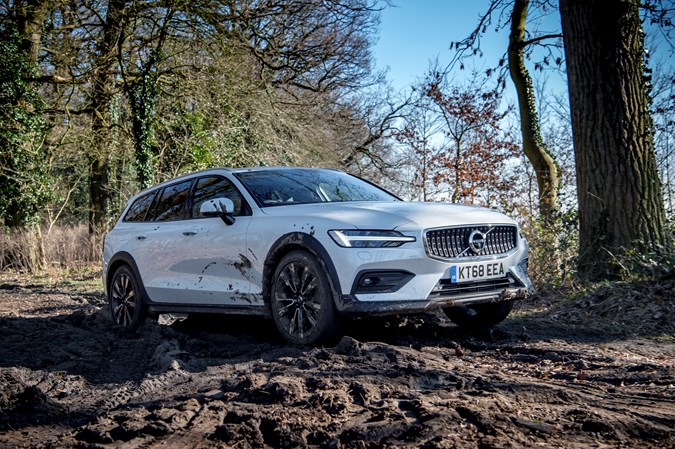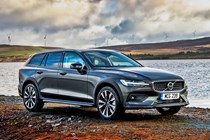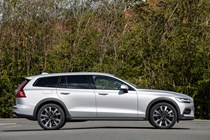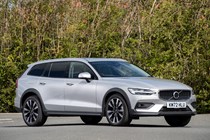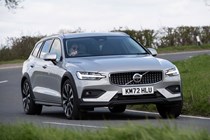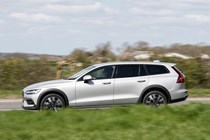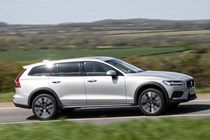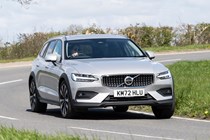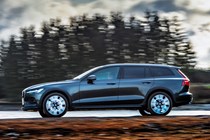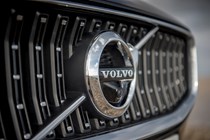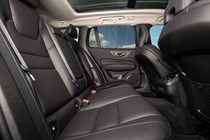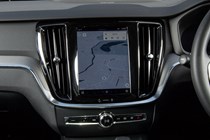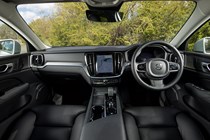
Volvo V60 Cross Country (2019-2024) engines, drive and performance
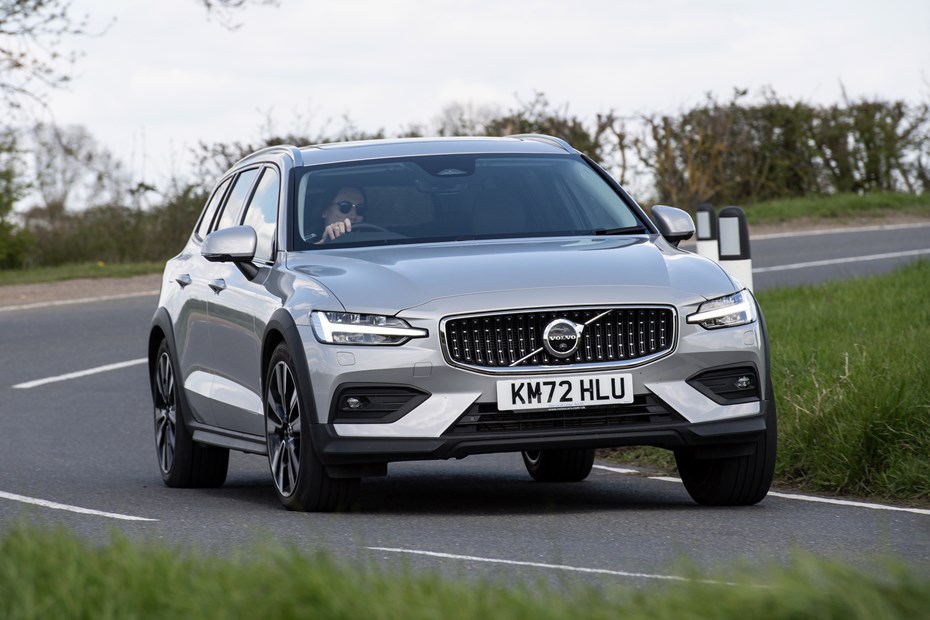
- Just one petrol engine available
- But it’s a good one with 250hp
- Standard four-wheel drive system
Petrol engines
The only engine available with the V60 Cross Country is Volvo’s B5 unit. It’s a 2.0-litre four-cylinder mild hybrid petrol engine that develops 250hp and 350Nm of torque. Most importantly, all the engine’s torque is available between 1,800rpm and 4,000rpm which makes it a very flexible unit. You always have enough power in reserve for an overtake and, because the engine sends drive to all four wheels, it seldom struggles to transmit its grunt to the tarmac.
The performance figures are impressive, too. Volvo says the Cross Country can blast from 0–62mph in 6.9 seconds, which is closing in on hot hatchback territory. And before Volvo introduced its range-wide 112mph top speed limiter, the V60 could keep pulling right up to 145mph.

The engine even sounds quite good when you rev it hard. Unlike a fast BMW or Audi, though, all the noise is ahead of you rather than spouting from the exhaust. We’re not sure the engine’s visceral mechanical thrashing matches Volvo’s sophisticated Scandi brand image, but it’s pleasing to see the V60 still has something to interest petrolheads (no matter how small the gesture).
The V60’s automatic gearbox is more of a mixed bag. Leave it to its own devices on a gentle cruise and it’s great, seamlessly shuffling between cogs. However, it’s a little dim-witted in manual mode. There’s a noticeable delay between when you select the gear and when the gear is slotted into place. You also change gears manually by moving the shifter left and right rather than forwards and backwards, which feels very strange.
What’s it like to drive?
- Broadly similar to the standard V60
- Focused on comfort rather than speed
- Less nimble than the BMW 3 Series
Volvo ploughs a different furrow to its German rival brands. Its cars prioritise comfort over absolute driver engagement – and the V60 Cross Country adheres to this playbook. It excels on the motorway – the engine recedes to a whisper; the suspension smooths out (most) imperfections and isolation from wind and road noise is good.
A standard Volvo V60 is marginally more comfortable. But it should be – it rides closer to the ground and can be specified with the company’s adaptive dampers which do a far better job of rounding off bumps than the Cross Country’s old school passive units. You can’t take a standard V60 off-road, though, so it’s a classic case of picking the right horse for the course.
Despite the 60mm increase in height, the Cross Country doesn’t wallow around like it’s driving on a waterbed. Body control is only slightly slacker than the standard car’s which means it corners with the same deftness. And, because of the extra suspension travel, you have the confidence to attack a broken B-road with greater gusto than you would in a standard V60, safe in the knowledge you won’t rip the front bumper off when you drop into an aggressive dip.
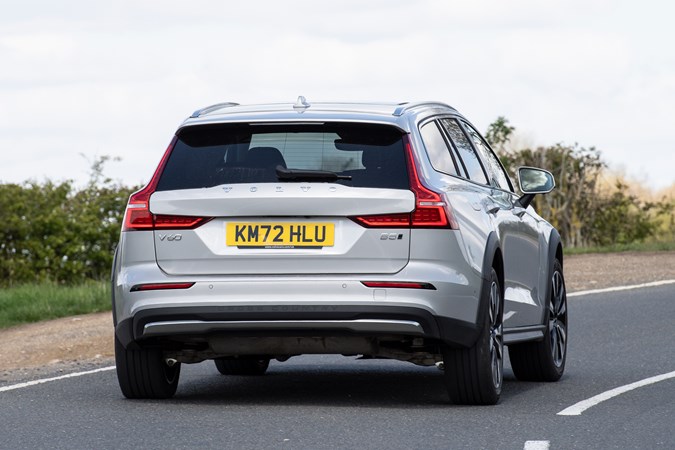
We also like the V60 Cross Country’s steering system, although we had to dig into the infotainment menus to find the best setting for it. The V60 doesn’t have a sport mode, but Volvo has included a ‘heavy steering’ setting which dials back the assistance on the rack. With this engaged, the steering weight is pretty much bang-on – it’s a lot more natural than the overly assisted standard setting.
Our only gripe with the steering is that it’s slightly too well isolated from the road. It doesn’t offer an accurate representation of the road surface in your palms until you hit an artillery shell-sized crater. If you’re a keen driver who values sensations like these, you’ll probably be better served by the BMW 3 Series Touring or, if you need a bit of off-road ability, a BMW X3.
What’s it like off-road?
Better than you’d expect. It isn’t a Land Rover Discovery by any stretch of the imagination, but the Cross Country will breeze over the sort of muddy terrain that would strand a standard V60.
We tested the Cross Country on the same route we use to test conventional SUVs. It wasn’t a stretch for the Volvo but, because it rides lower than most SUVs, you can’t always straddle obstacles like sharp rocks or tree stumps without catching the underside. You need to pick your routes a little more carefully than you would in a Range Rover Evoque, for example.
Volvo’s four-wheel drive system helps a lot. Most of the V60 Cross Country’s SUV rivals are front-wheel drive, which makes them a little more likely to get stuck in boggy conditions. But even the Volvo has its limits because it doesn’t have any proper off-roading hardware such as differential locks or a low-range transfer case.
Remember, the Cross Country is a halfway house between a V60 and an XC60 SUV in Volvo’s line-up. While it can give plenty of road-biased family SUVs a run for their money, it should be considered more like the conventional V60 estate in terms of its off-road prowess.
